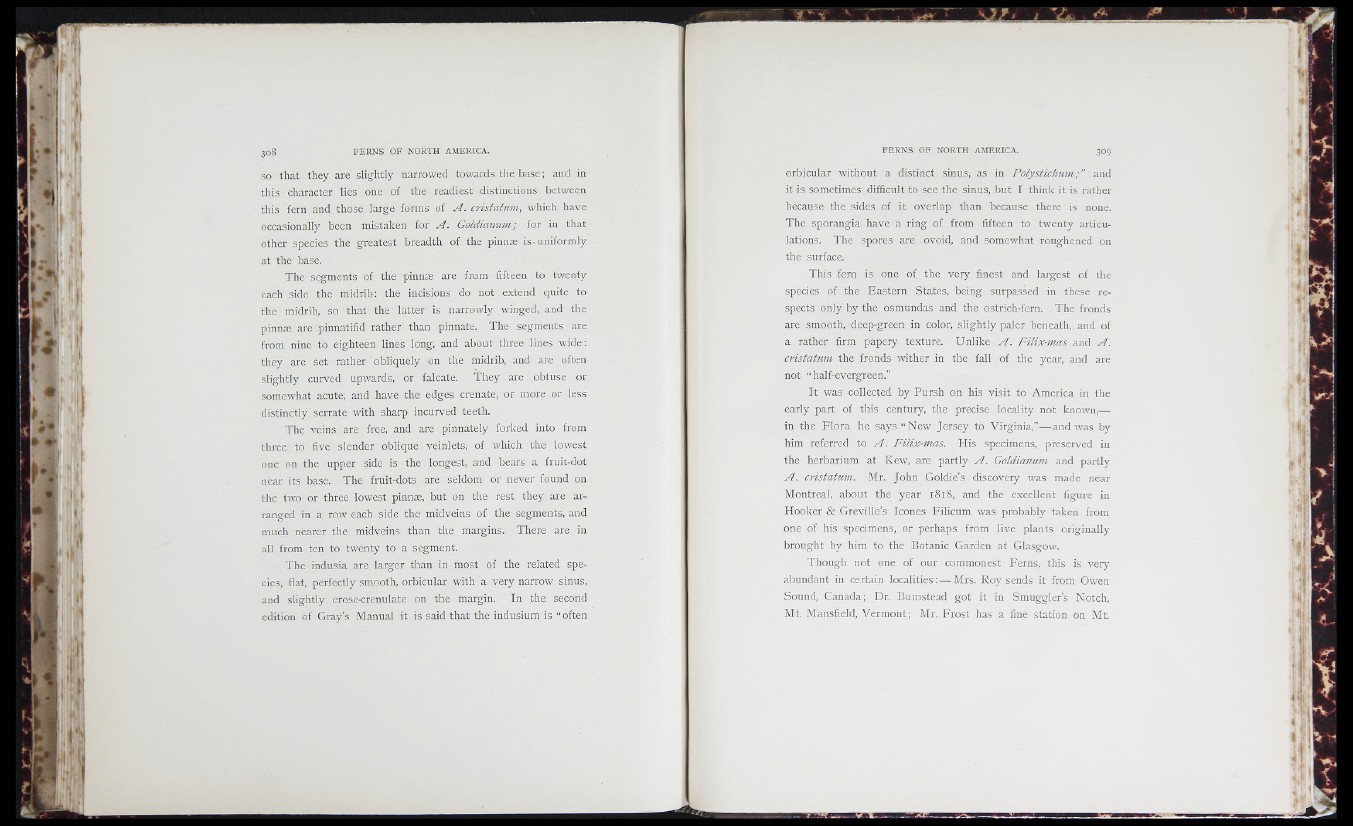
• î i
SO that they are slightly narrowed towards the base; and in
this character lies one of the readiest distinctions between
this fern and those large forms of A . cristahtm, which have
occasionally been mistaken for A . Goldimnmt: for in that
other species the greatest breadth of the pinnæ is ■ uniformly
at the base.
The segments of the pinnæ are from fifteen to twenty
each side the midrib: the incisions do not extend quite to
the midrib, so that the latter is narrowly winged, and the
pinnæ are pinnatifid rather than pinnate. The segments are
from nine to eighteen lines long, and about three lines wide:
they are set rather obliquely on the midrib, and are often
slightly curved upwards, or falcate. They are obtuse or
somewhat acute, and have the edges crenate, or more or less
distinctly serrate with sharp incurved teeth.
The veins are free, and are pinnately forked into from
three to five slender oblique veinlets, of which the lowest
one on the upper side is the longest, and bears a fruit-dot
near its base. The fruit-dots are seldom or never found on
the two or three lowest pinnæ, but on the rest they are arranged
in a row each side the midveins of the segments, and
much nearer the midveins than the margins. There are in
all from ten to twenty to a segment.
The indusia are larger than in most of the related species,
flat, perfectly smooth, orbicular with a very narrow sinus,
and slightly erose-crenulate on the margin. In the second
edition of Gray’s Manual it is said that the indusium is “ often
orbicular without a distinct sinus, as in Polystichum;” and
it is sometimes difficult to see the sinus, but I think it is rather
because the sides of it overlap than because there is none.
The sporangia have a ring of from fifteen to twenty articulations.
The spores are ovoid, and somewhat roughened on
the surface.
This fern is one of the very finest and largest of the
species of the Eastern States, being surpassed in these respects
only by the osmundas and the ostrich-fern. The fronds
are smooth, deep-green in color, slightly paler beneath, and of
a rather firm papery texture. Unlike A . Filix-mas and A .
cHstatum the fronds wither in the fall of the year, and are
not “ half-evergreen.”
It was collected by Pursh on his visit to America in the
early part of this century, the precise locality not known,—
in the Flora he says “ New Jersey to ’Virginia,”— and was by
him referred to A . Filix-mas. His specimens, preserved in
the herbarium at Kew, are partly A . Goldianum and partly
A . cristatum. Mr. John Goldie’s discovery was made near
Montreal, about the year 1818, and the excellent figure in
Hooker & Greville’s leones Filicum was probably taken from
one of his specimens, or perhaps from live plants originally
brought by him to the Botanic Garden at Glasgow.
Though not one of our commonest Ferns, this is very
abundant in certain localities: — Mrs. Roy sends it from Owen
Sound, Ganada; Dr. Bumstead got it in Smuggler’s Notch,
Mt. Mansfield, Vermont; Mr. Frost has a fine station on Mt.
1